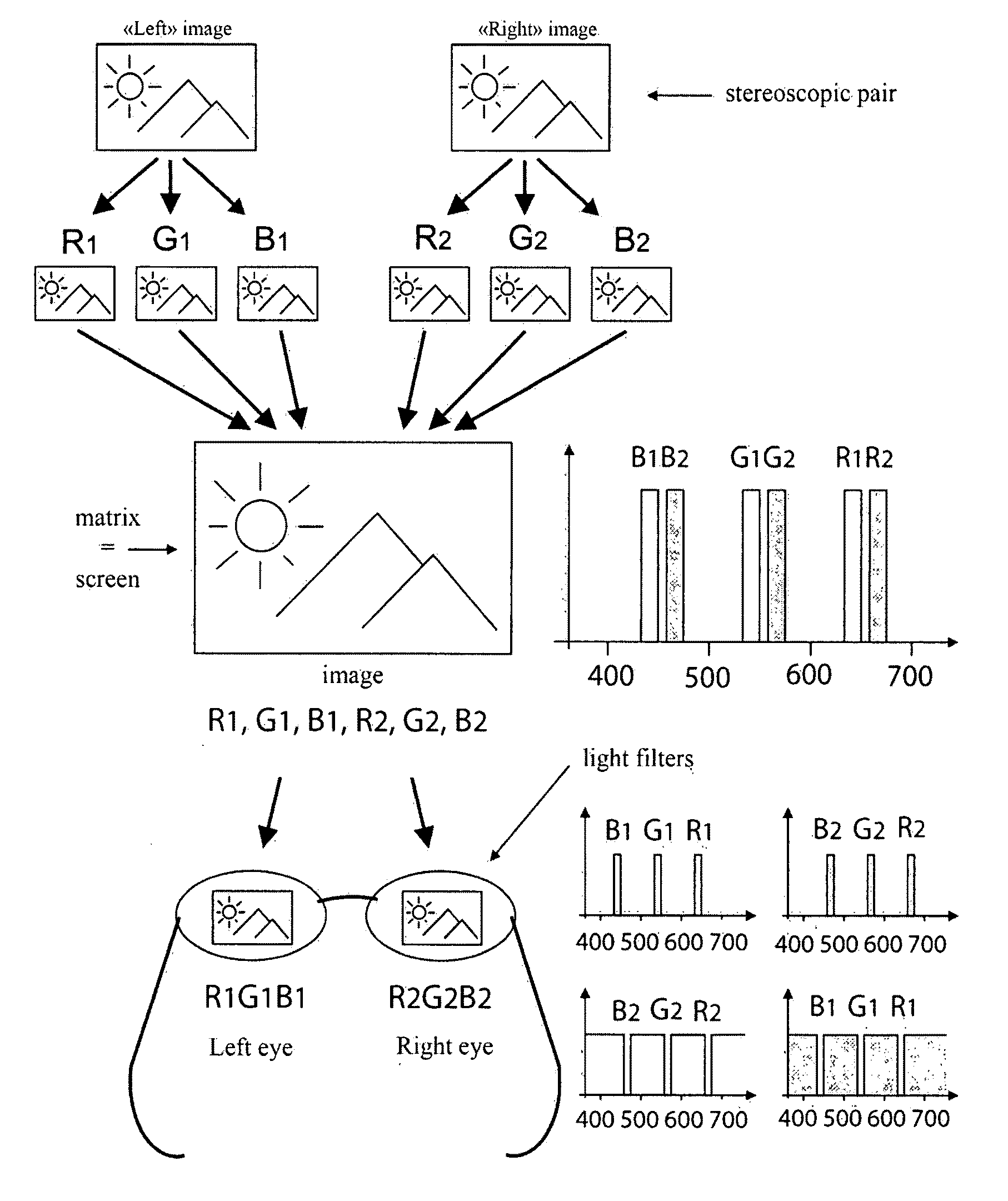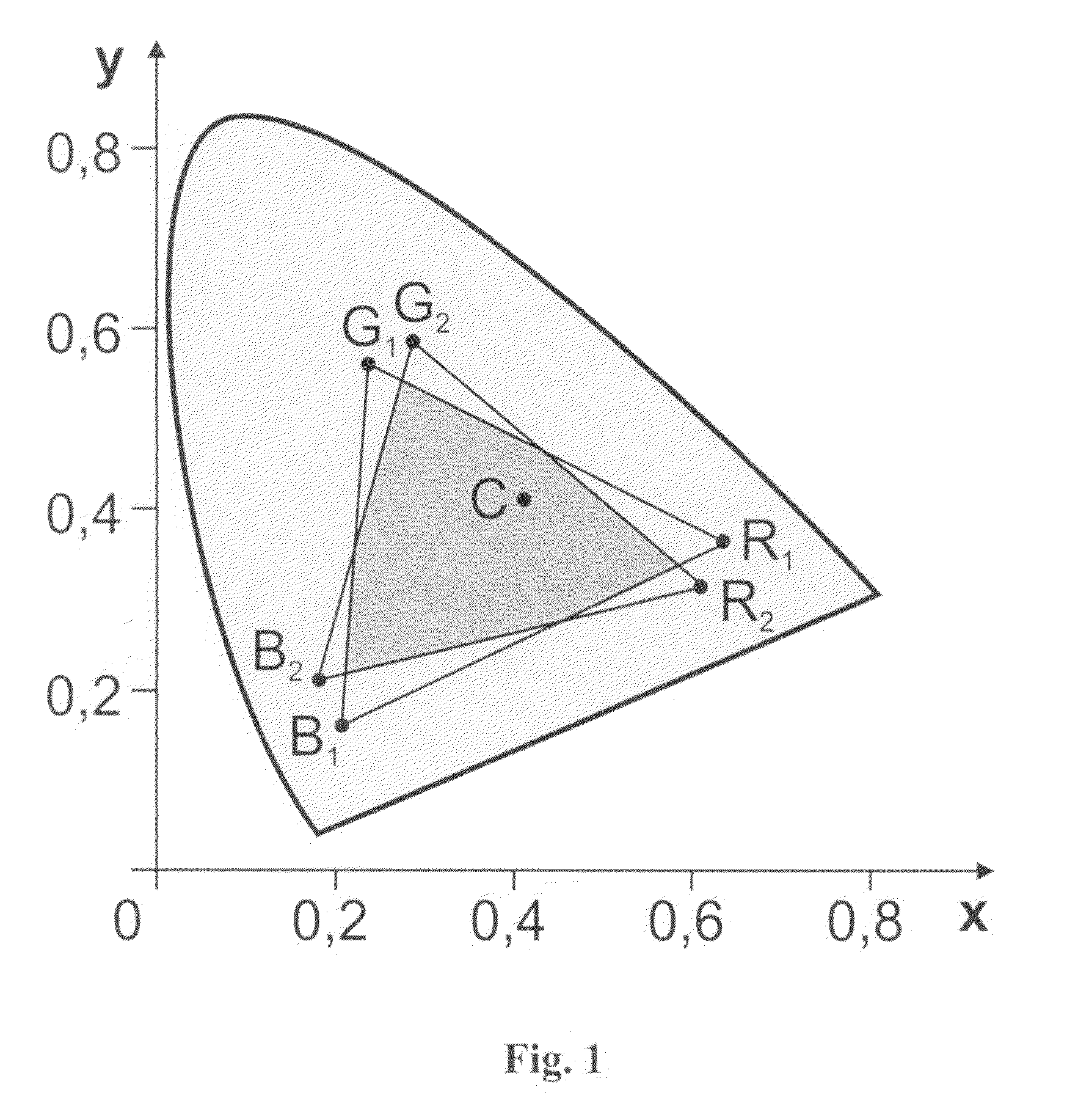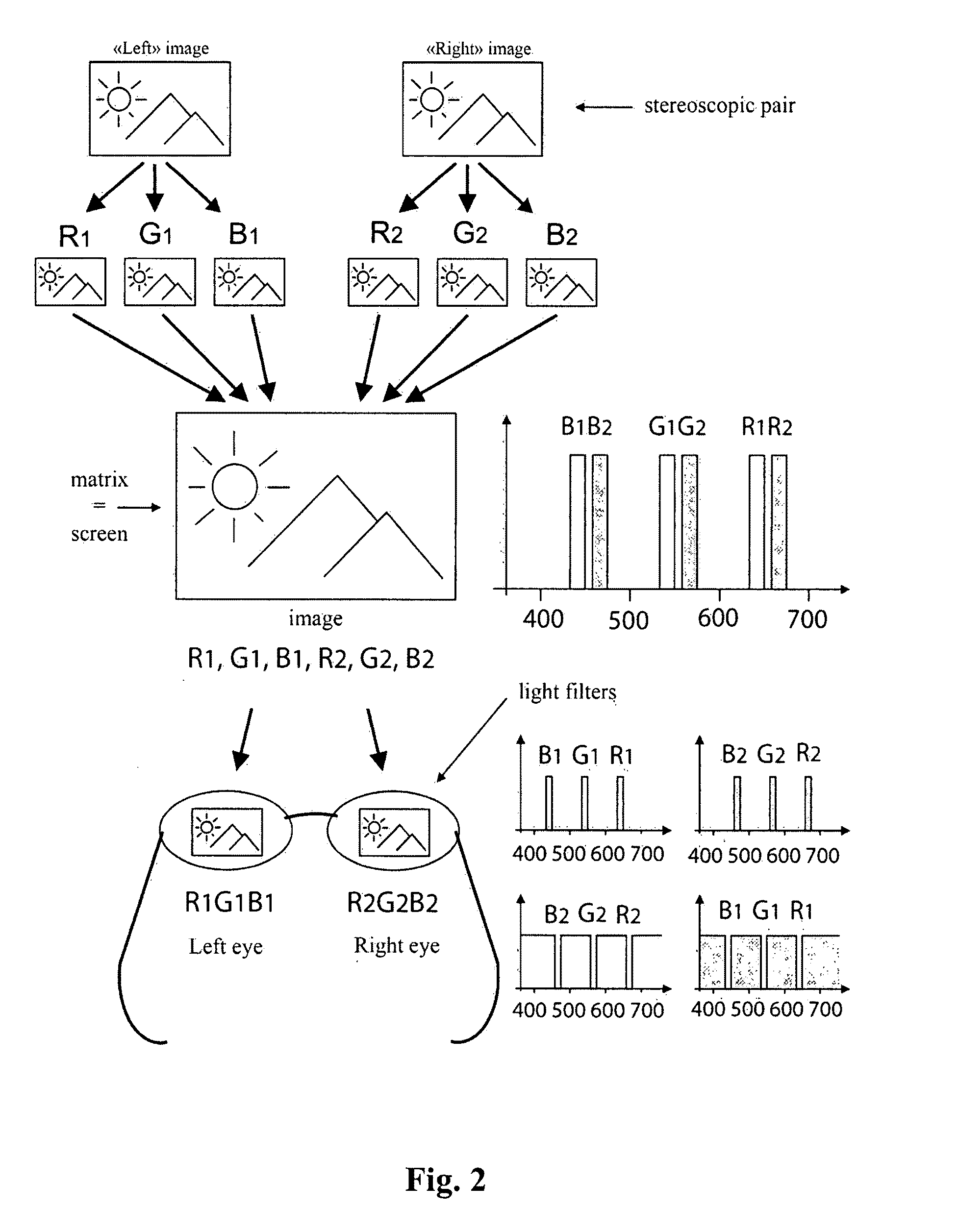Method and system of forming a stereo image
a stereo image and stereo technology, applied in the field of stereo image production systems, can solve the problems of image bifurcation, defects in the quality of a stereoscopic image, and defects in the existing methods used for creating matrixes
- Summary
- Abstract
- Description
- Claims
- Application Information
AI Technical Summary
Problems solved by technology
Method used
Image
Examples
Embodiment Construction
[0037]The ability of man to see a stereoscopic (3D) image in a near zone (conventionally up to 5 m) is first of all dependent on the binocular mechanism of human eyesight. When we look at an object spaced close by, two different dimetric images are produced on the retina of left and right eyes, which are perceived by the brain as a single 3D image. Accordingly, in case of two dimetric images (frame) corresponding to a viewpoint by the left and right eyes (a so-called “stereoscopic pair”) and of the left eye seeing only the “left” frame of the stereoscopic pair and the right eye—only the “right” frame of the stereoscopic pair, the stereoscopic (3D) image can be produced.
[0038]A great number of colors perceived by main can be plotted on the x and y coordinates of a model CIP. FIG. 1 (a light-gray region). Any kit of three (and more) spectral independent colors (primary colors) specifies a color space (a triangle on the X and Y coordinates of the model CIP) whose all colors can be prod...
PUM
 Login to View More
Login to View More Abstract
Description
Claims
Application Information
 Login to View More
Login to View More - R&D
- Intellectual Property
- Life Sciences
- Materials
- Tech Scout
- Unparalleled Data Quality
- Higher Quality Content
- 60% Fewer Hallucinations
Browse by: Latest US Patents, China's latest patents, Technical Efficacy Thesaurus, Application Domain, Technology Topic, Popular Technical Reports.
© 2025 PatSnap. All rights reserved.Legal|Privacy policy|Modern Slavery Act Transparency Statement|Sitemap|About US| Contact US: help@patsnap.com



